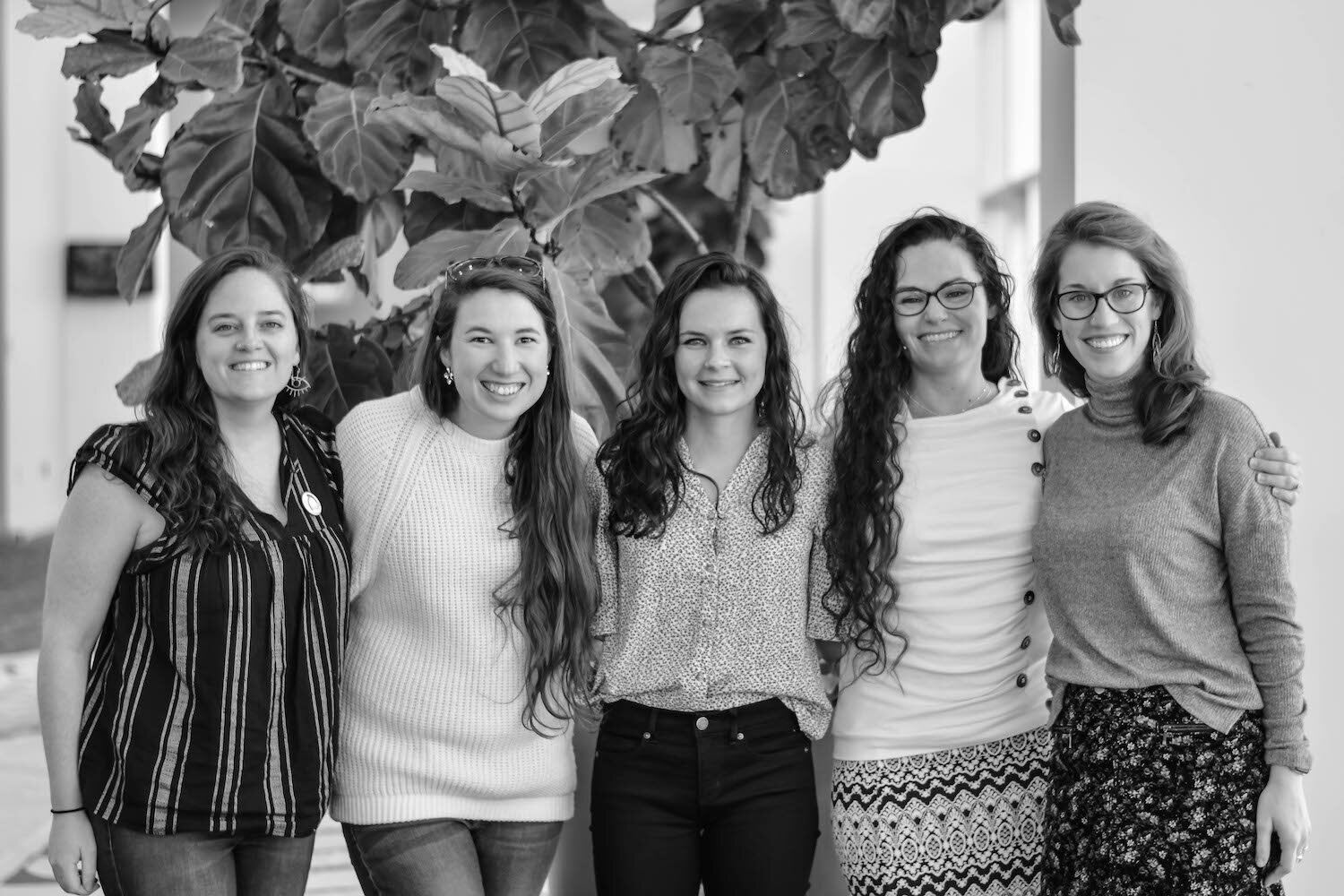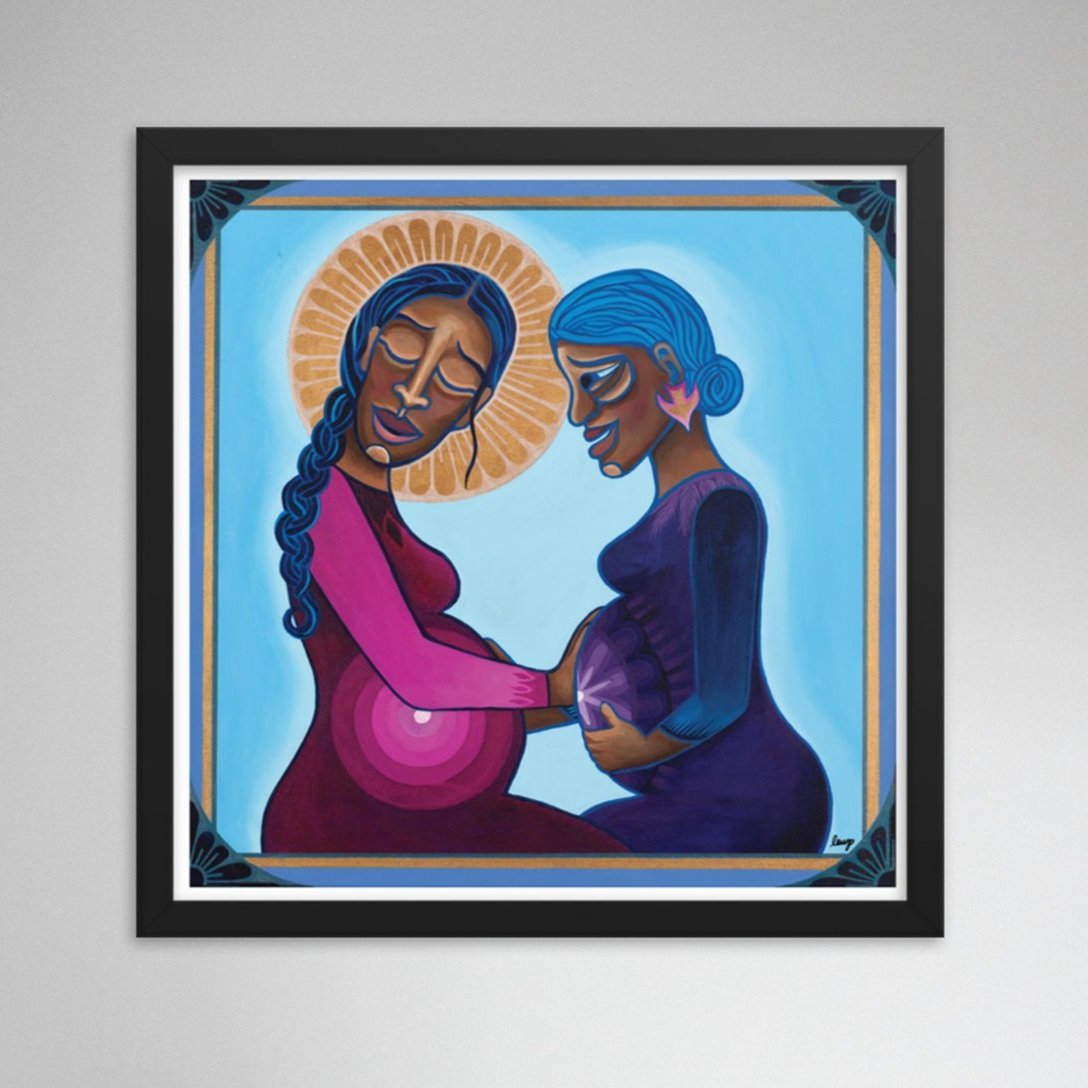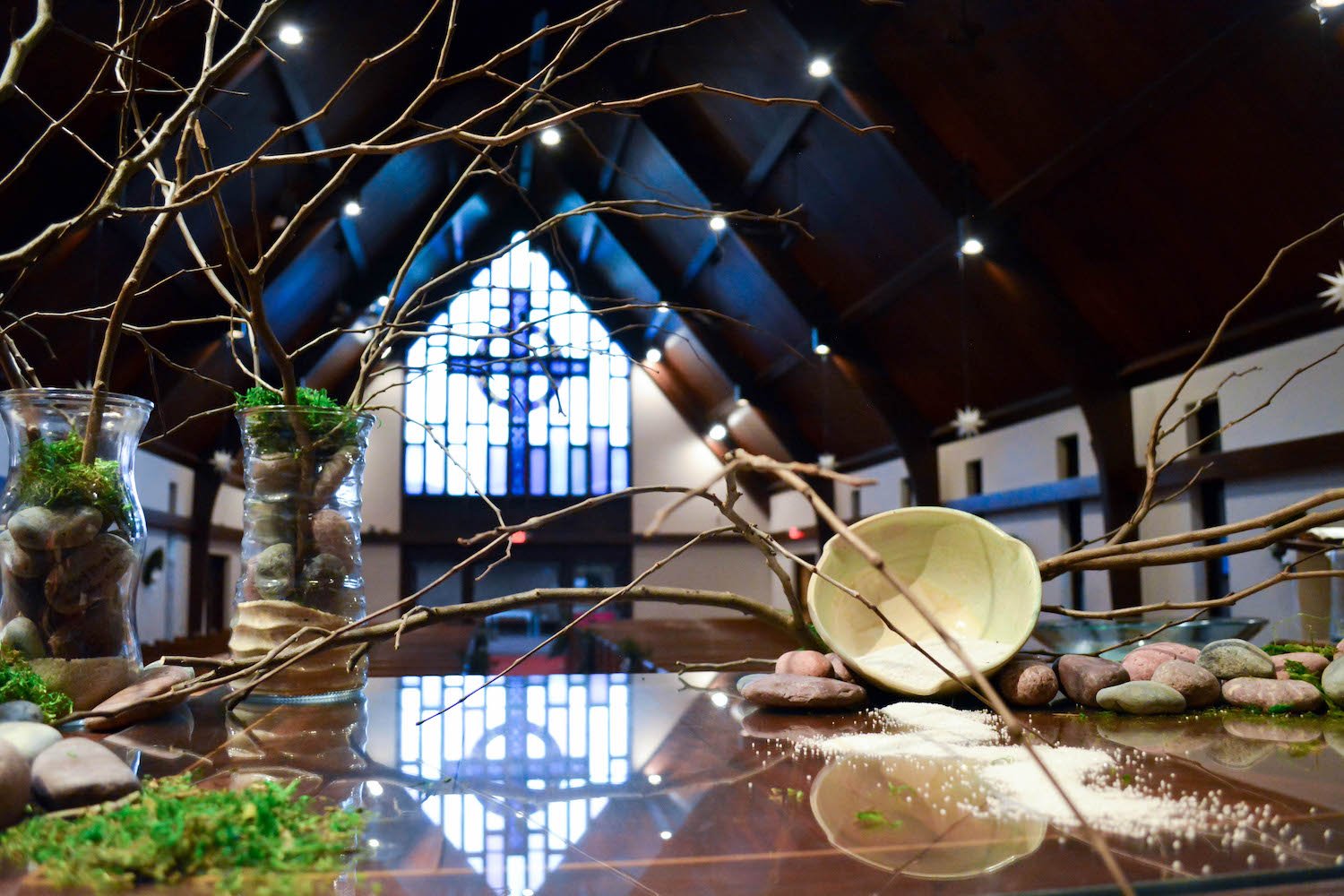Our Story
we believe in God's Living Word
A blazing bush breathes “I AM,” a billowing cloud signals the way, a valley of bones clatters to life, a thundering wind weaves all voices into one, and a barren grave whispers: “Mary, Mary–Do not fear.” Over and over, our scriptures offer us glimpses of God meeting people in words and images, in visions and poetry, in dreams and revelations beyond our wildest imagining.
Thanks to many Reformers, we’ve inherited a robust emphasis on the Word; we value the many ways scripture can instruct, inspire, edify, and ground us. But in our pursuit to centralize the Word in our worship, we sometimes become complacent, letting the Word lay flat on a page. Sometimes we forget that, before the Word was written, it was envisioned, and uttered, and breathed.
To worship more fully and faithfully, we believe we must embrace the promise that our scriptures are God’s living Word. To bring our whole selves to God in worship, we must allow the scriptures to come to life through color, movement, poetry, song, and image.
“To bring our whole selves to God in worship, we must allow the scriptures to come to life.”
Our Beginning
A Sanctified Art emerged as a ministry to support worshiping communities in integrating art and creativity into their spiritual practices. Initially representing the art and ministry of Lisle Gwynn Garrity, A Sanctified Art expanded to become a team of artists and pastors in January, 2016. This article published in The Presbyterian Outlook tells our origin story and how a twirling dream shifted into reality. We accepted our first seminary intern, Anna Strickland, in 2019, who joined our team in 2020. In 2019, we began intentionally welcoming guest contributors and partnering with organizations, musicians, creatives, and scholars to bring new energy, insight, and wisdom into our resources.
Our talented creative team formed as the result of each of us discerning ways to blend our creative talents with ministry. We are trained theologians and pastors in addition to being artists and creators. We are called to be artists just as much as ministers; in order to faithfully offer our gifts to the Church and world, we cannot set our creativity aside. We offer our creative gifts to resource, provoke, guide, facilitate, and enrich the spiritual lives of worshipers around the world.
“Each of us are called to be artists just as much as ministers; in order to faithfully offer our gifts to the church and world, we cannot set our creativity aside.”
our core values
The unique creativity of all people. Created in the image of the Divine Artist, every person contains the capacity for creativity and imagination.
The inherent goodness of all humans, regardless of identity, race, nationality, sexuality, status, or gender expression.
The good news of the gospel that calls us to work toward liberation and wholeness for all of creation.
Worship that welcomes all of who we are, engaging body, mind, heart, and soul.
Our standards of practice
Expansive language for God and God’s people
There are many ways to name God—Father, Mother, Creator, Redeemer, Sustainer, Holy One. We believe God transcends gender, therefore, our references to God are not limited to one pronoun. In our language about God’s people, we prioritize words that recognize the beautiful diversity of all humans. We avoid language that limits gender to a binary (for example: instead of, “Brothers and sisters in Christ,” we choose, “Family of God,” or “Siblings in Christ”).
Imaginative images for God and God’s people
The stories of scripture are rooted in a particular time and place. When we image scripture, we are not interested in simply rendering a historical illustration of the text. We hope that our images serve as visual proclamation—as art that conveys a deeper meaning or provides new insights for our lives today. Therefore, when we craft visuals inspired by scripture, we do so with imagination and with the hope that people with varying identities and backgrounds might see themselves reflected in these images.
Honesty & Authenticity
We create our resources with a sense of openness to where the Spirit might stir, surprise, confuse, compel, and guide us. Our artwork, written reflections, poetry, films, curriculum, and devotionals convey our honest and genuine expressions of faith. We hope our resources meet you in real and meaningful ways in your own journey of faith.
Anti-oppression & anti-racism
In our work, remembering is a spiritual practice. We remember that God created all creation with a goodness refrain. We remember that the poetry of love proclaims that darkness is sacred and black is beautiful (Song of Songs 1:5-6). We remember that Jesus was not white. However, we remember that the white Church has perpetuated violence and oppression against black, brown, and indigenous peoples. We remember that the white Church has profited from slavery. We remember that in the 1820s, white American churches mass-produced and mass-marketed images of white Jesus in order to form a unified national identity of white superiority.* We remember that racism is still alive in our faith communities. As we remember all of these things, we commit to the ongoing work of disrupting racism wherever it persists—trusting that through this journey, God re-members us and makes us whole.
*Ibram X. Kendi, Stamped from the Beginning: The Definitive History of Racist Ideas in America. (New York, NY: Nations Books, 2016). 153.
We Believe . . .
God moves in mysterious ways, reaching people through respected and traditional paths, as well as through creative, new, and sometimes startling encounters. The Church has reached a turning point. What has always worked in years past may not work in years to come. To move forward, we have to be honest, reflective, and in touch with the unique ways God is stirring in our lives.
Pastors are overworked and volunteers are exhausted; when push comes to shove, creativity can often go out the door. Faith leaders need the support of artists and creatives to midwife artful, God-breathed ministry.
We are all created in the image of the Creator and share in the capacity to be creative and imaginative. Some of us learn best by doing, or by hearing, or by seeing. To widen access to God, we have to make space for all.
Art helps us connect our hearts with our hands, our faith with our lives, and our mess with our God. We need the prophetic, connective power of art in our churches. We are called to be creative, fearless, and messy.
“Art helps us connect our hearts with our hands, our faith with our lives, and our mess with our God. ”
awards & features
faith & Leadership
This article, published through Leadership Education at Duke Divinity, provides an introduction to A Sanctified Art’s ministry and highlights how several churches use the resources in varied contexts.
invested faith
In 2023, A Sanctified Art was awarded a grant from Invested Faith. Invested Faith is a fund that receives the assets of institutions and individuals and offers small, unrestricted grants to faith-rooted social entrepreneurs building businesses that are changing unjust systems.
The presbyterian outlook
Founder Lisle Gwynn Garrity tells the story of how A Sanctified Art came to be in the November 2023 issue of The Presbyterian Outlook.
Testimonials
“As a Director of Worship, I am always on the lookout for fresh words for liturgy and modern ways of expressing our faith in today’s world. These resources are the best purchased resources I have ever used. My pastor and I did not feel the need to ‘re-write’ any of the words for worship as we often do. We always prefer gender neutral words written in modern language that can still appeal to our mainline congregation. This creative team is wonderful!”
“These resources encourage me to look with new eyes at familiar stories and scriptural themes. They breathe new life into traditional seasons of church life which have often become rote. Not only that, but they inspire additional growth and artistic endeavors, spurring our worship to new heights of creativity and spirituality because we see what we can do.”
“We have a very creative worship team and feel strongly about supporting the arts. We are able to take your incredible work and customize meaningful worship seasons for our parish. With three very different services every Sunday, we find there is something for everyone in your bundles.”
“I love your creations. The poems, banners, studies, art; they help me to think outside of the box of traditional Christian education and encourage my congregation to challenge themselves to see God outside of the box as well.”









